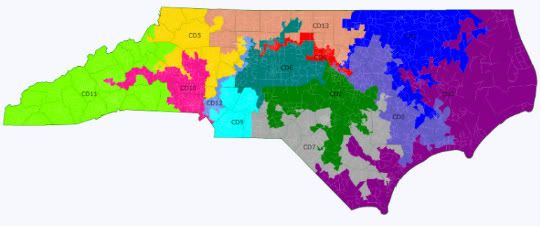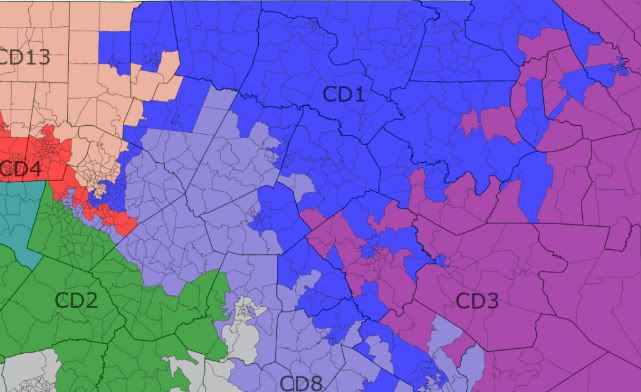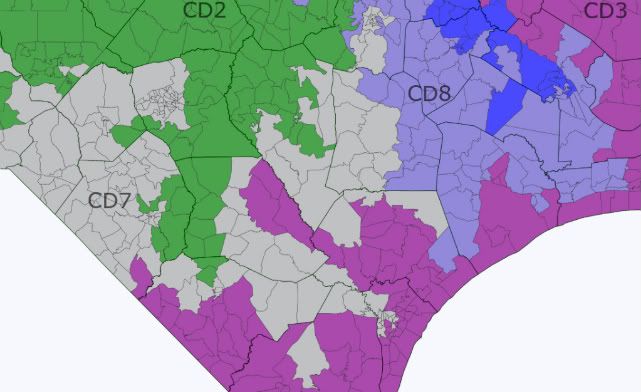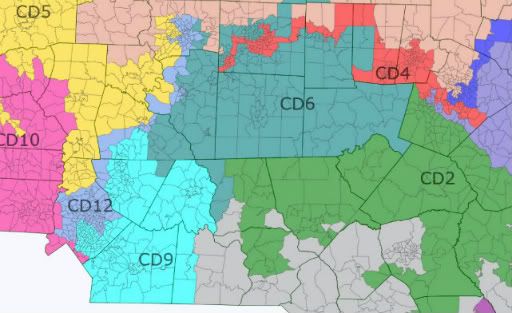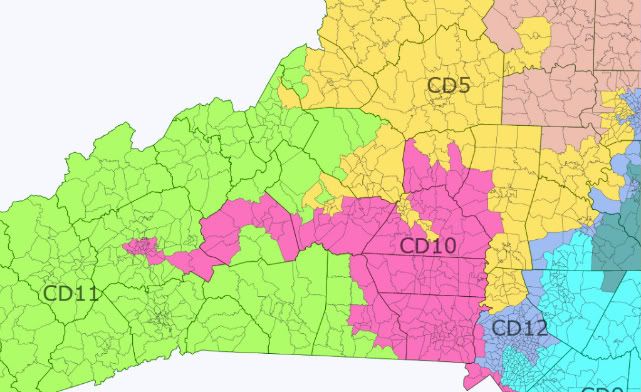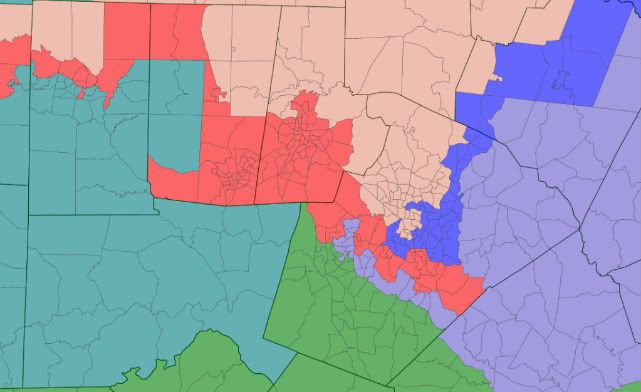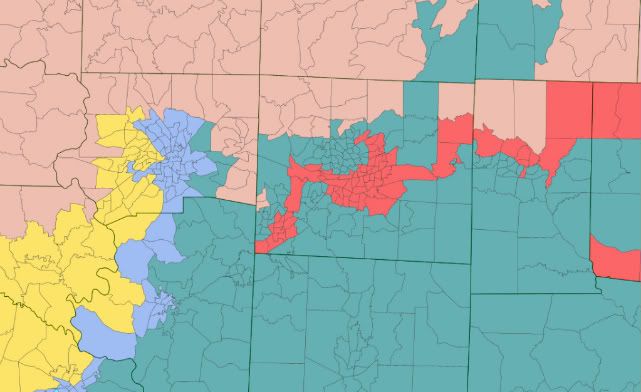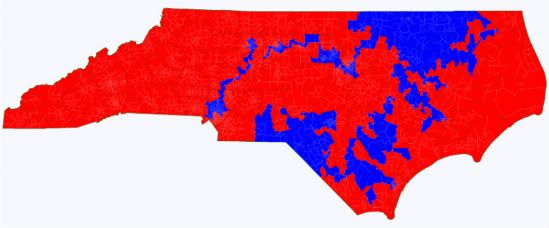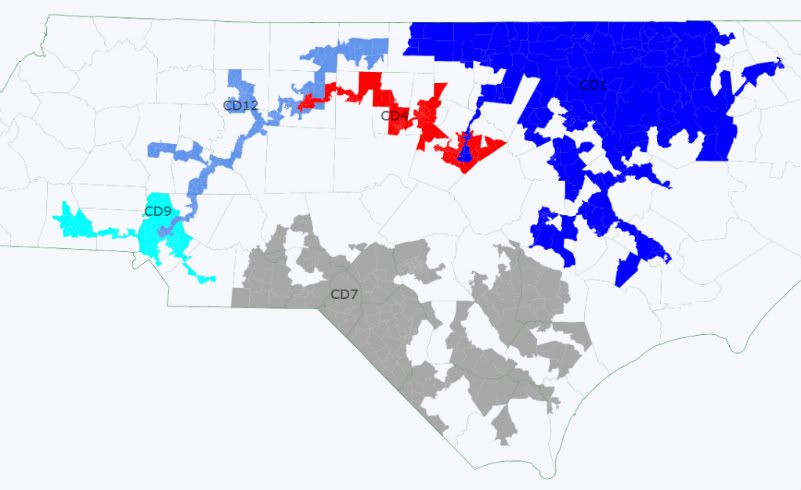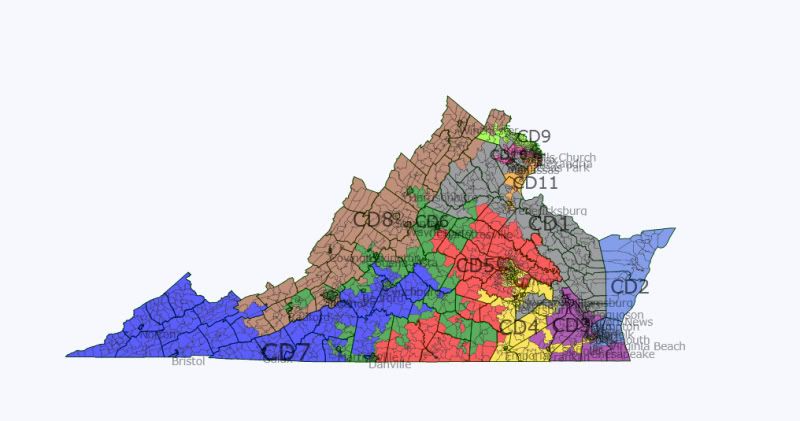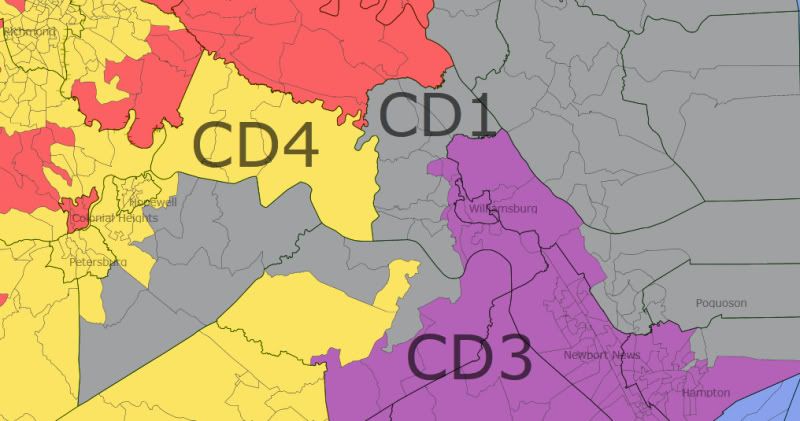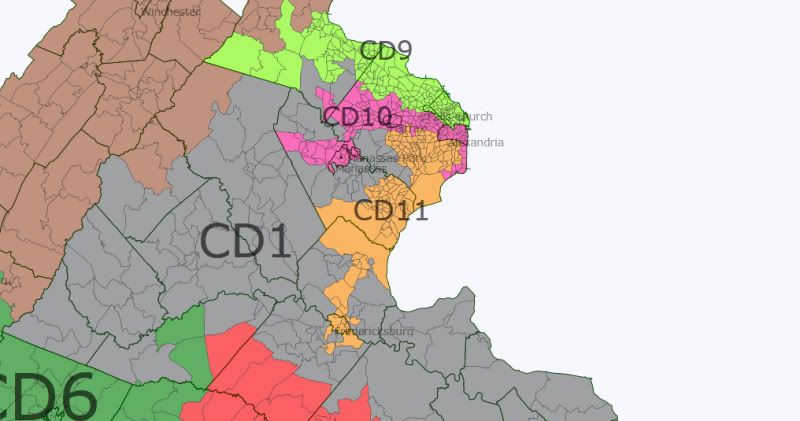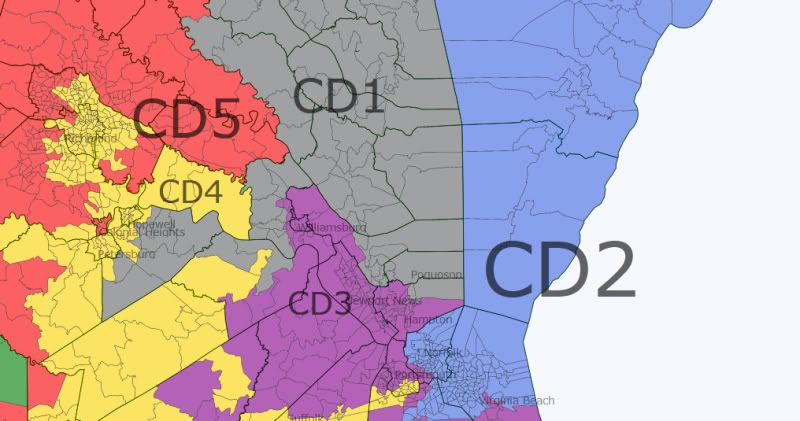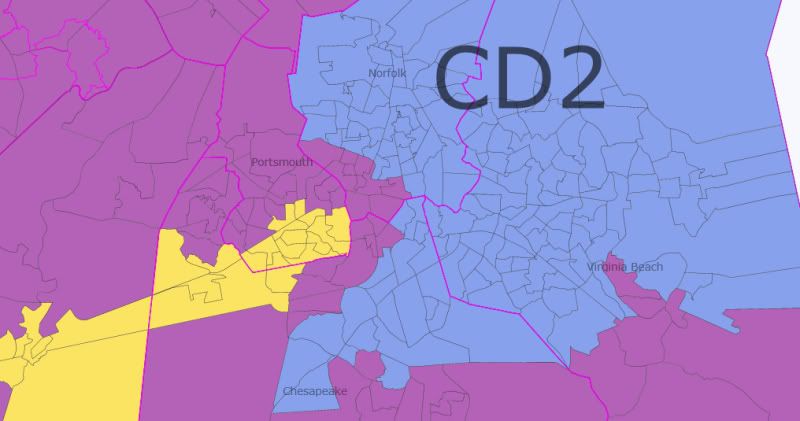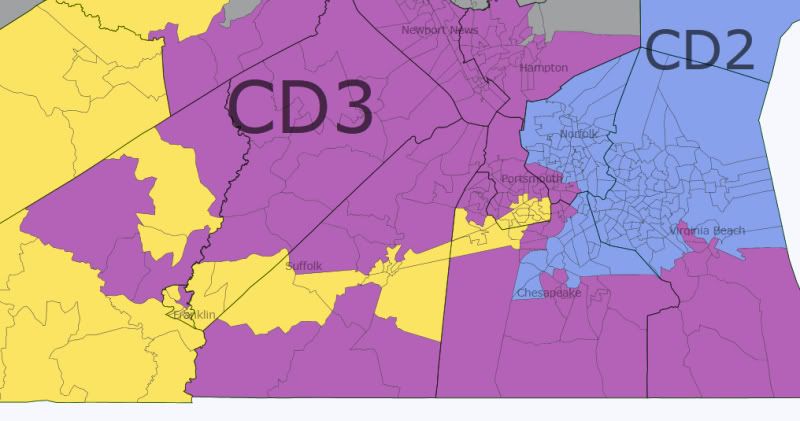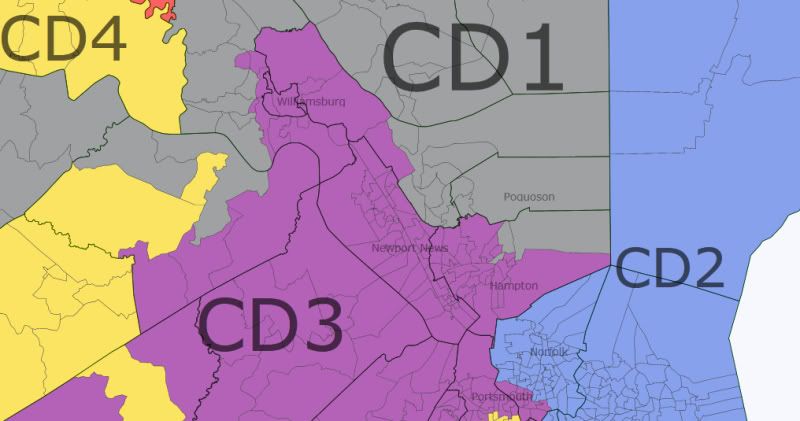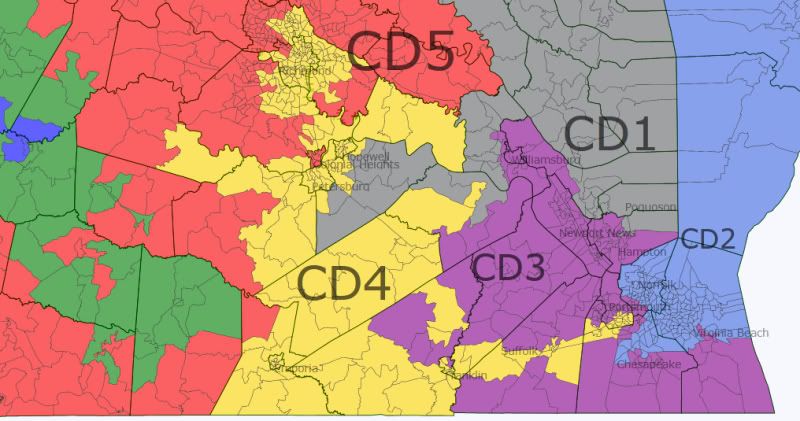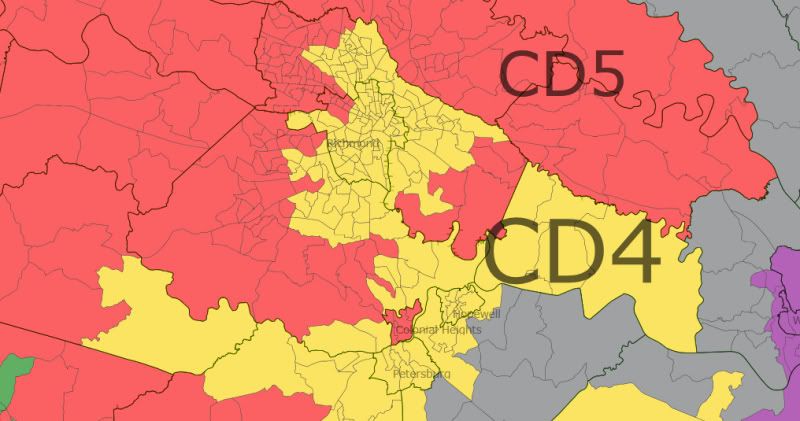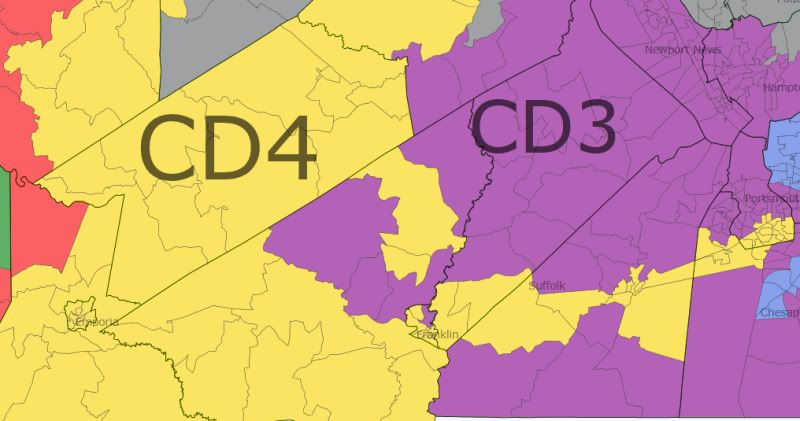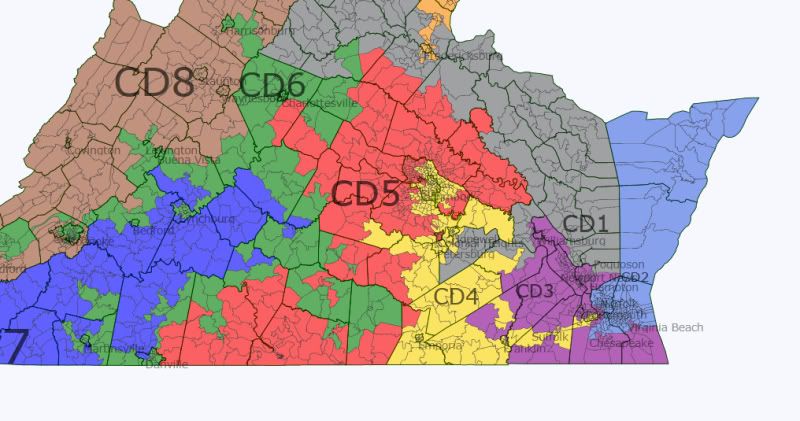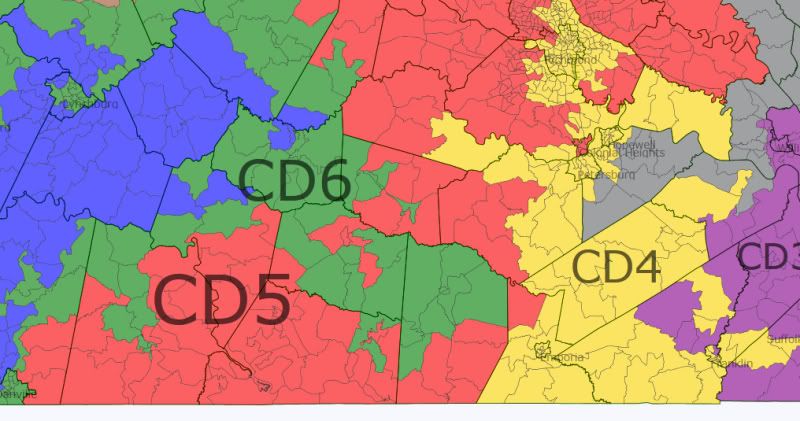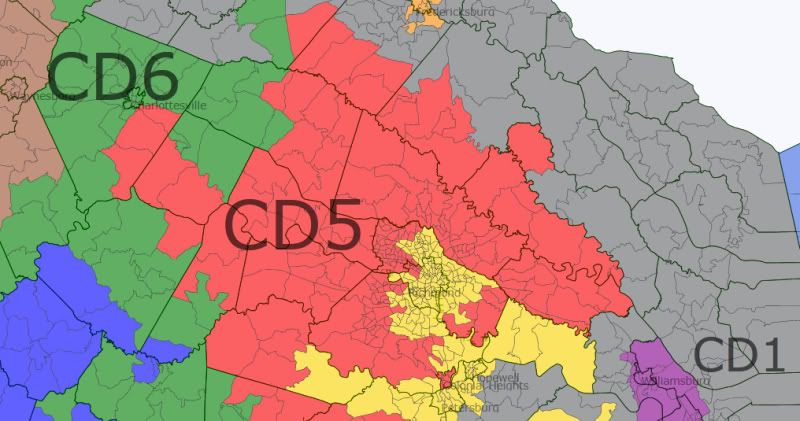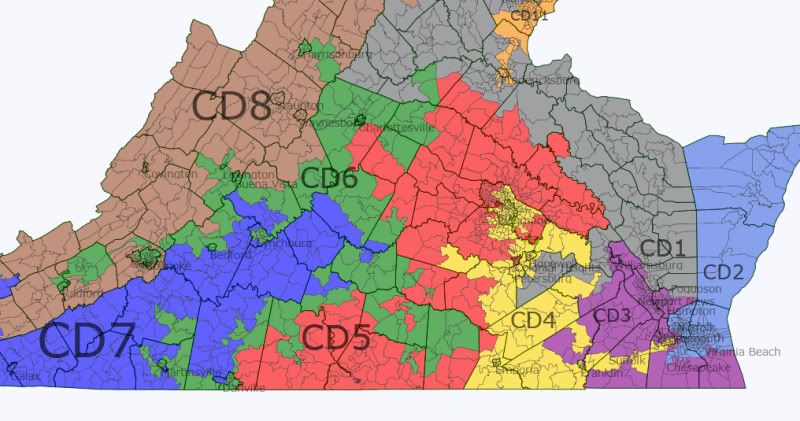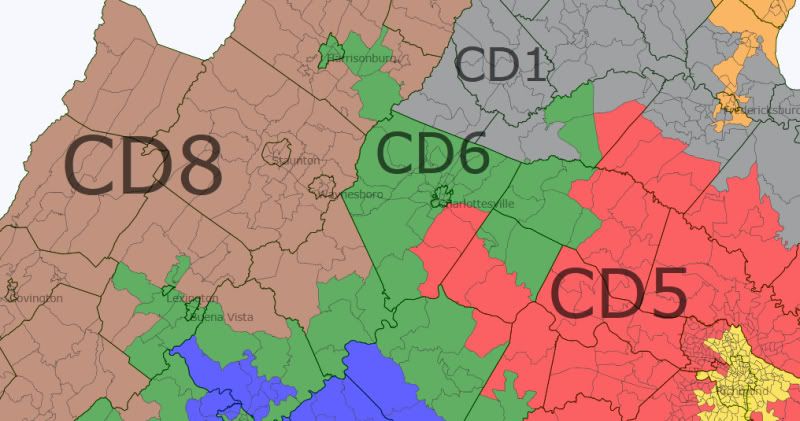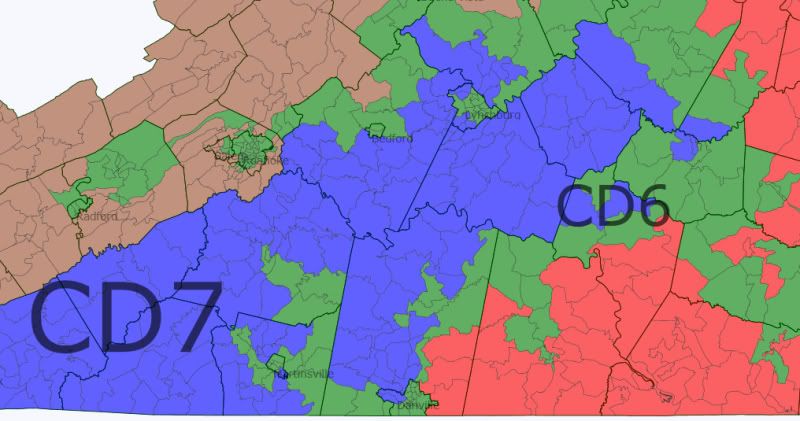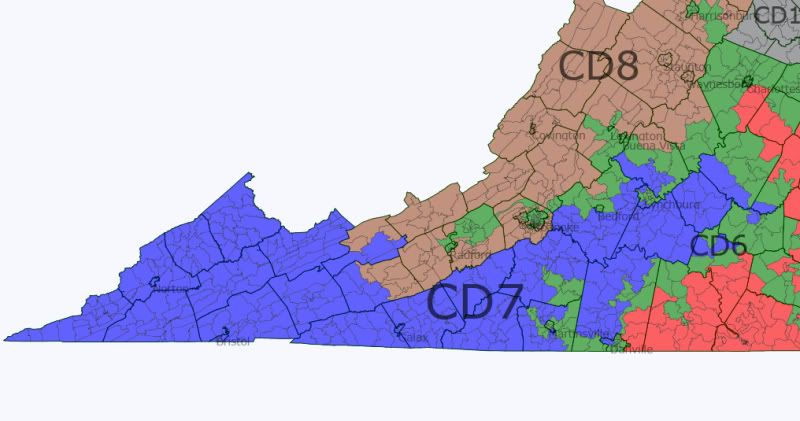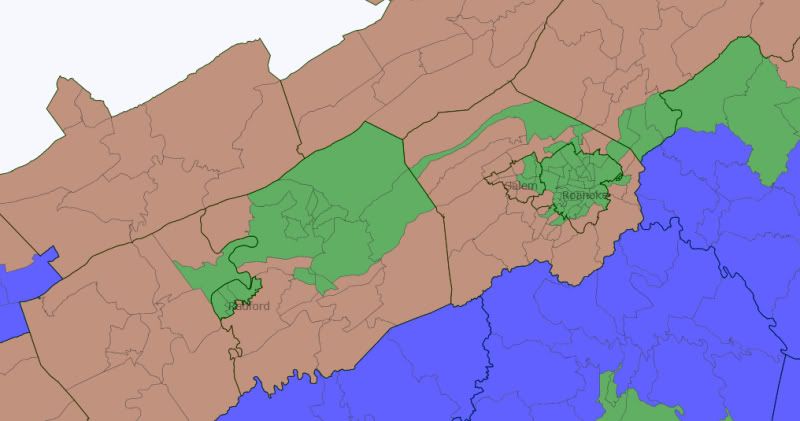Cross posted on my blog http://frogandturtle.blogspot…. which you should visit for more redistricting maps.
I was reading the recent diary on Virginia redistricting and saw people calling for a 7-4 Republican map. I decided to post this one to see how it works.
Both parties have a voice in Virginia’s redistricting process this year so expect either a quick compromise or a long battle that ends in a court drawn map. The Republicans control the Governorship and the State House but the Democrats control the State Senate. The Republicans hold an 8-3 majority of Virginia’s House seats, 3 of them were won in 2010. The Republicans will want to protect their freshman Robert Hurt (R) and Scott Rigell (R) who won in swing districts as well as Frank Wolf (R) whose district is trending Democratic. Trying to protect them all will be difficult because the Republicans will not want to create a dummymander. Therefore, I drew a 7-4 Republican map that the Republicans will like because although they lose one district, the 2nd and 5th districts are now more Republican. The Democrats should like this plan too because it strengthens the 11th district and creates a new Democratic district. I also ensured that the 3rd district’s African American population exceeded 50%. As for the districts on the map, there are 3 Safe Democratic, 1 Likely Democratic, 1 Lean Republican, 2 Likely Republican and 4 Safe Republican.
Here is a link with a map of Virginia’s current congressional districts (after clicking the link, scroll down to the bottom of the page:) http://www.nationalatlas.gov/p…
A few notes: The “Average 2000-2009” refers to the average performance of Democrats and Republicans in that district from 2000 to 2009. Change does not refer to the average performance; change refers to how well Obama performed in the new district compared to the old one. “Old Demographics” refers to the demographics of the old district in 2000.

Virginia
Virginia’s 1st Congressional District Rob Whitman (R) Blue
President 2008: Obama 143,841 47%, McCain 165,688 53%
Average 2000-2009: Democrats 101,210 44%, Republicans 128,630 56%
Change: McCain +3
Demographics: 6.1% Hispanic, 19.7% African American, 68.8% White
Old Demographics: 18.4% African American, 74.7% White
Status: Safe Republican
This district becomes more Republican as it loses parts of Newport News and Hampton in the south and losing Democratic Prince William County in the north. To keep population equal with other districts, the 1st district gains Republican leaning rural counties such as New Kent. The 1st district also picks up the Delmarva Peninsula which leans Democratic but the removal of most of Newport News makes this district more Republican.

Hampton Roads
Virginia’s 2nd Congressional District Scott Rigell (R) vs. Randy Forbes (R) ? Green
President 2008: Obama 139,807 48%, McCain 152,608 52%
Average 2000-2009: Democrats 101,215 46%, McCain 121,240 54%
Change: McCain +6
Demographics: 5.0% Asian, 5.9% Hispanic, 21.3% African American, 64.2% White
Old Demographics: 21.4% African American, 67.0% White
Status: Lean Republican
I could not do much to strengthen Rigell because I had to keep the 3rd district majority African American so it could not pick up many precincts that voted for Obama and had a low African American population. Anyway, I strengthened Rigell a bit by removing Hampton and most of Norfolk. I also added Republican parts of Chesapeake where Rep. Randy Forbes (R) of the 4th district lives. If he chooses to run in the 2nd, he will have the seniority advantage but more of Rigell’s current district is in the 2nd. Also, Forbes is popular because although Obama won his district, Forbes has won easily in the past few elections.
Virginia’s 3rd Congressional District Bobby Scott (D) Dark Magenta
President 2008: Obama 194,505 69%, McCain 85,991 31%
Average 2000-2009: Democrats 123,854 64%, McCain 69,604 36%
Change: McCain +14
Demographics: 51.3% African American, 39.0% White
Old Demographics: 56.0% African American, 37.7% White
Status: Safe Democratic
Scott’s district gets more Republican as it loses all of Richmond and picks up less Democratic precincts from the 1st in Newport News. I kept the district majority African American by picking up African American areas in Suffolk, Petersburg, and Sussex County. Although Scott’s district becomes more Republican, it is still extremely safe for him and majority African American. He should have no problems winning reelection.

Richmond Area
Virginia’s 4th Congressional District Robert Hurt (R) vs. Randy Forbes (R) ? Red
President 2008: Obama 133,903 42%, McCain 187,735 58%
Average 2000-2009: Democrats 97,669 41%, Republicans 142,126 59%
Change: McCain +17
Demographics: 23.3% African American, 71.1% White
Old Demographics: 33.1% African American, 62.0% White
Status: Safe Republican
Forbes may run here because this district contains some of his current territory in Chesterfield County and some southeastern rural counties. Hurt will run too because his home Chatham is in this district. If Forbes ran, As for Hurt’s district, I strengthened it because the Republicans will try to protect him from a tough race. I removed heavily Democratic Charlottesville from Charlottesville while adding parts of the current 4th district such as Republican Amelia County near Richmond. Hurt should have no trouble winning reelection here.
Virginia’s 5th Congressional District Vacant Eric Cantor (R) ? Yellow
President 2008: Obama 129,143 43%, McCain 175,646 57%
Average 2000-2009: Democrats 92,922 40%, McCain 137,356 60%
Change: N/A
Demographics: 5.4% Hispanic, 10.8% African American, 79.9% White
Old Demographics: N/A
Status: Safe Republican
Cantor’s 7th district is now Democratic so I expect him to run here, although his home is in the 7th district. The 5th district contains much of his current territory by including some conservative rural counties near Richmond such as Goochland, Hanover County in the Richmond exurbs, Spotsylvania County in the D.C exurbs and the string of rural counties in Central Virginia in Cantor’s current district. The 5th district also picks up some far D.C exurbs though because it represents Winchester and western Loudon County. Cantor used to represent a 53% McCain district that was trending Democratic but his district is now 55% McCain and the rural areas are not trending Democratic. Cantor should be safe here.
Virginia’s 6th Congressional District Bob Goodlatte (R) Teal
President 2008: Obama 137,543 46%, McCain 162,585 54%
Average 2000-2009: Democrats 102,396 44%, Republicans 130,058 56%
Change: Obama + 7
Demographics: 9.1% African American, 82.2% White
Old Demographics: 10.9% African American, 84.8% White
Status: Safe Republican
Goodlatte’s district becomes more Democratic as it loses heavily Republican Amherst County and picks up Charlottesville. The Republicans will probably want Charlottesville in Goodlatte’s district because it provided Tom Perrellio with his winning margin and more in 2008 and Goodlatte has enough Republicans in his district to offset Democratic votes in Charlottesville. Goodlatte should be safe here.
Virginia’s 7th Congressional District Vacant Gray
President 2008: Obama 186,082 61%, 121,294 McCain 39%
Average 2000-2009: Democrats 124,386 54%, Republicans 105,495 46%
Change: N/A
Demographics: 6.7% Hispanic, 34.5% African American, 52.0% White
Old Demographics: N/A
Status: Safe Democratic
Republicans may decide to sacrifice one district in order to protect Robert Hurt and Eric Cantor. The 7th district also helps Scott Rigell (R) in the 2nd district because by losing Richmond, the 3rd district has to pick up African American areas currently in the 2nd district so the 3rd can remain majority African American. Anyway, the 7th district is a combination of the current 3rd, 4th and 7th districts. The 7th contains all of Richmond, all of Henrico County, Chesterfield County’s close in suburbs and Hopewell. In the current map, the Richmond area is split between three districts but the Richmond area now has its own district so Richmond area legislators should like this district. Possible candidates for this seat could be State Senator Donald McEachin (D) who represents part of Henrico County or Henry Marsh (D) who represents some heavily African American parts of the district.

Northern Virginia
Virginia’s 8th Congressional District Jim Moran (D) Slate Blue
President 2008: Obama 178,372 66%, McCain 92,487 34%
Average 2000-2009: Democrats 146,592 64%, Republicans 82,791 36%
Change: McCain +7
Demographics: 12.5% Asian, 16.5% Hispanic, 9.9% African American, 57.9% White
Old Demographics: 9.5% Asian, 16.4% Hispanic, 13.4% African American, 57.1% White
Status: Safe Democratic
Moran’s district does not undergo major changes as Moran retains his base in Arlington and Alexandria. His district becomes a few points more Republican in order to protect Gerry Connelly (D) of the 11th district. Moran loses the close in suburbs near Alexandria such as Fort Washington to the 11th District. To compensate for the loss of the close in suburbs near Alexandria, the 8th district gains Democratic parts of McLean, Oakton, Herndon and Tysons Corner. Although Moran’s district is not as Democratic as its current form, Moran should have no problems winning reelection in the general or the primary.
Virginia’s 9th Congressional District Morgan Griffith (R) Periwinkle
President 2008: Obama 111,232 40%, McCain 166,719 60%
Average 2000-2009: Democrats 94,587 43%, Republicans 123,531 57%
Change: McCain +1
Demographics: 3.7% African American, 92.1% White
Old Demographics: 3.8% African American, 93.3% White
Status: Likely Republican
Griffith’s district does not undergo major changes as he loses Alleghany County which usually votes Democratic at a local level. The 9th district had slow population growth so the 9th gained Franklin and Bedford Counties which are both strongly Republican. It is possible Rick Boucher (D) who previously held this district will run again but it will be more difficult for him because of the new Republican counties in the district. Anyway, it was difficult to strength Griffith without creating convoluted lines or making the 6th district Democratic enough for a competitive race.
Virginia’s 10th Congressional District Frank Wolf (R) Deep Pink
President 2008: Obama 149,174 53%, McCain 132,937 47%
Average 2000-2009: Democrats 107,560 49%, Republicans 113,791 51%
Change: McCain +1
Demographics: 17.9% Asian, 11.0% Hispanic, 6.9% African American, 60.7% White
Old Demographics: 6.6% Asian, 7.1% Hispanic, 6.7% African American, 77.2% White
Status: Likely Republican
Northern Virginia is trending Democratic so drawing Wolf a district that will be safe Republican in the long term is impossible but I drew a district that should protect him for the next few years. I removed the western part of the district around Winchester which leans Republican but I also removed the Democratic parts of Herndon, McLean and Manassas. Although the 10th district is growing quickly, it had to gain a few more areas so it gained some moderate areas near Fairfax City and some conservative parts of Prince William County. Wolf is popular so he should hold this seat. If he retires though, Democrats will have a shot here.
Virginia’s 11th Congressional District Gerry Connelly (D) chartreuse
President 2008: Obama 149,097 60%, McCain 99,321 40%
Average 2000-2009: Democrats 105,702 55%, Republicans 88,099 45%
Change: Obama +5
Demographics: 10.6% Asian, 21.4% Hispanic, 17.4% African American, 46.9% White
Old Demographics: 10.9% Asian, 9.1% Hispanic, 10.1% African American, 66.8% White
Status: Likely Democratic
Connelly faced a tough race last year from Keith Fimian (R) in 2010 which is a high water mark for Republicans. If Connelly could survive in 2010, he can survive any year barring a major scandal. Anyway, I strengthened Connelly so he would not have another tough race. I removed the moderate areas near Fairfax City, Fimian’s home Oakton, and conservative parts of Prince William County. I added Democratic areas near Alexandria and Democratic Manassas. These changes should protect Connelly

Loading ...
